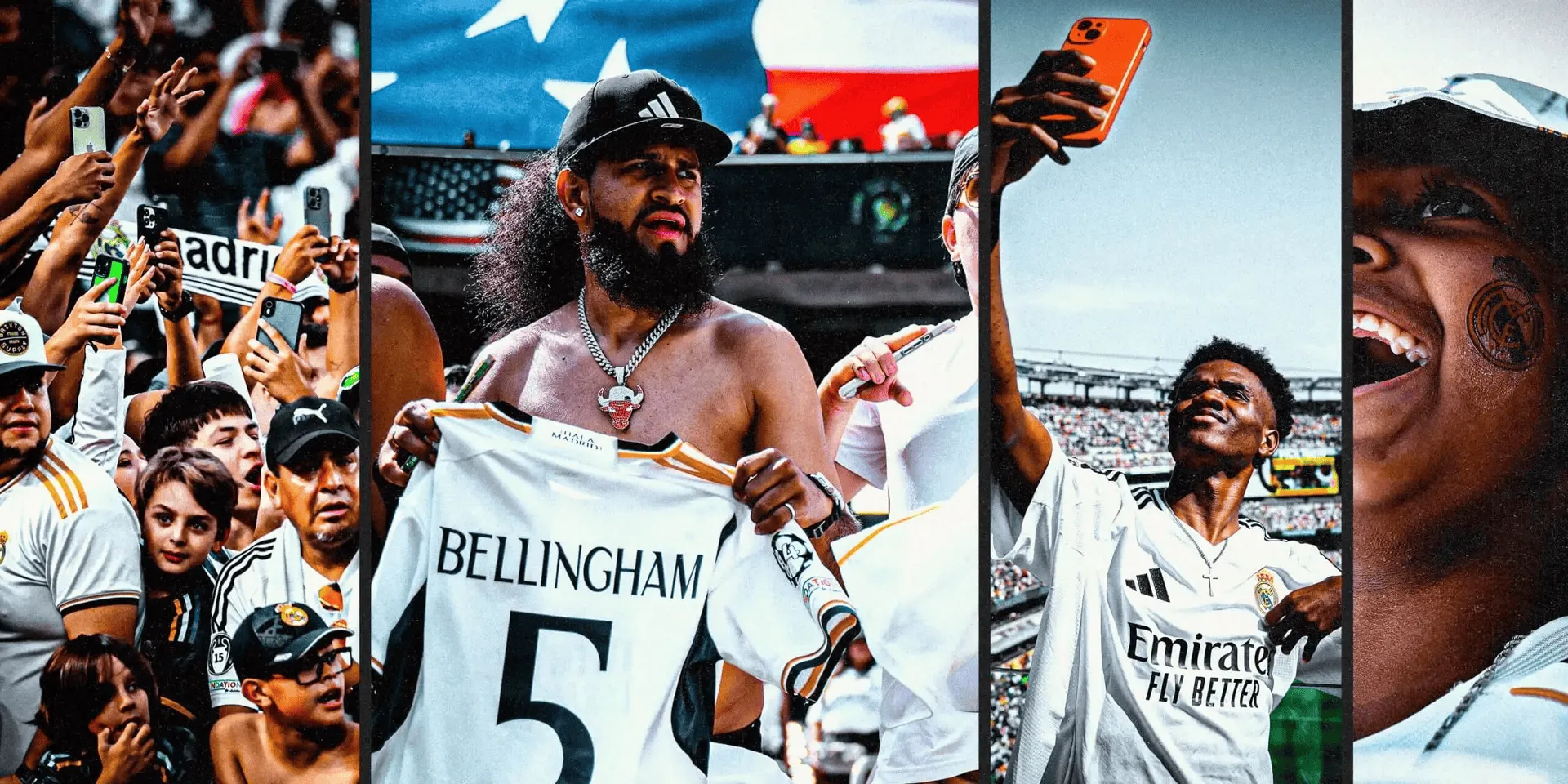
Real Madrid are indeed the biggest draw of this year’s Club World Cup. Los Blancos have attracted more spectators than any other team, with an average of 67,247 fans per match. Their games have seen stadiums packed to capacity. While ticket prices for the Club World Cup fluctuated significantly due to dynamic pricing, most tickets for Real Madrid’s matches retained their value.
At Bank of America Stadium in Charlotte, 70,248 fans turned out to watch Real Madrid take on Pachuca. During the Club World Cup, the average attendance at this stadium stood at 37,000.
Real Madrid’s quarter-final against Borussia Dortmund at MetLife Stadium drew an even larger crowd of 76,611—far exceeding the venue’s tournament average of 43,000.
According to the U.S. Census Bureau, nearly 20% of the U.S. population identified as Hispanic in 2023, totaling 65 million people. Barcelona has also made inroads into this market, but they haven’t won the Champions League in a decade. In contrast, Real Madrid have lifted the trophy four times in that period and reached the final roughly every two years, with both recent success and historical legacy proving crucial.
“You could ask anyone in Mexico, ‘What’s your favorite team?’ They might say Club América or Chivas,” explained [Stilitano]. “But if you ask, ‘What’s your second favorite?’ 80% will say Real Madrid or Barcelona.”
Some Pachuca fans in Charlotte likely fit this mold—enjoying a dual experience by watching both their team and Real Madrid.
“Some fans wake up in the morning and their first thought is their football club,” a Real Madrid executive explained. Speaking on condition of anonymity as he was not authorized to speak publicly, he added, “Then they remember they have a family and kids.”
“Others don’t watch much football, but if you ask them, they’ll say, ‘Well, I don’t like football, but if I had to choose, it’d be between Barcelona and Real Madrid.’ At the top of the pyramid are those who engage deeply with the brand; at the bottom are those with minimal investment. For Real Madrid in the U.S., more and more people are moving up from the bottom to the top, becoming more passionate fans. That’s why the U.S. market is so vital and strategic.”
The Club World Cup, in some ways, bears a distinct Florentino Pérez hallmark—almost a match made in heaven. A case in point: Real Madrid’s pre-semi-final press conference at MetLife Stadium on Tuesday night was canceled at the last minute. This came after the team and manager Xabi Alonso, scheduled to fly from Miami to Washington D.C., were left circling over the capital due to storm delays.
Prior to that, after winning their quarter-final in New Jersey, they opted to return to Palm Beach for training—a 1,200-mile journey.
Cracking the U.S. market hasn’t been an overnight feat for Real Madrid. In 2017, the El Clásico finally arrived in America: Barcelona beat a Real Madrid side featuring Karim Benzema and Gareth Bale 3-2 at Hard Rock Stadium, with this first “friendly” between the rivals raking in a staggering $35.5 million in ticket revenue.
Subsequent events followed in Las Vegas, New York, and Dallas. NBA star Luka Dončić—who played for Dallas before his blockbuster move to the Lakers, one of the most jaw-dropping trades in basketball history—has also played a role.
Dončić’s status in U.S. sports culture, coupled with his past as a Real Madrid basketball player, represents another cross-over collaboration, further boosting Real Madrid’s mainstream brand recognition in the U.S.




